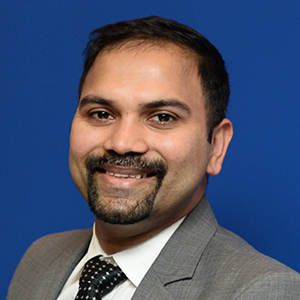Industry Thought Leadership
Nokia’s 5G FIRST Solution
October, 2017Let’s take a snapshot of how the industry is working together on 5G and then we can move on to understand what is Nokia’s 5G FIRST for better understanding.
We are pushing 5G to follow a set of universal standards. It means with the universal standards, devices will work with every network, and operators can use the same suite of solutions in every market across the world. Those standards are being developed by 3GPP, and the industry expectations are that the first set of those standards will be finalized in time for first full-blown commercial 5G networks by 2020.
2020 is still further away. Our most ambitious CSP customers can already see early use cases that could be delivered against the industry specifications in late 2017/2018. Additional functions like enhanced mobile broadband and sliceable core network will be part of the first 3GPP standards to be published in 2018. So, the first commercial 5G networks will be launched by 2020, whereas first adopters will deploy 3GPP compliant trial networks already by end of 2018.
One other important asset for 5G networks is spectrum. High bandwidth services are spectrum-hungry, and 5G opens the door for using higher frequencies such as cmWave and mmWave that simply cannot be used by LTE. In the US and Korea, one of the early adopter markets, 28 and 39 GHz are already licensed for early trials. High frequencies and the available bandwidth provide the ability to offer hyper-local services but they only have a very short range. Wide area coverage and in-building penetration needs lower frequencies to be opened up, which will come later.
Nokia offers industry’s first end-to-end 5G solution based on pre-standards and this is called 5G FIRST. This includes:
Radio:
- 5G Massive MIMO radio
- AirScale baseband upgraded to 5G and AirScale cloud RAN, with 5G software to run pre-standards or early 3GPP versions.
Core:
- Cloud packet core with features to support 5G Next Generation Core
Transport:
- 5G-ready microwave transport, fiber optics for the 5G era, and IP Backhaul
5G is not just another G more than 4G. It’s much more than that. Our society has been through a series of industrial revolutions, each making fundamental changes to the way we live. The 5G era will be based on cloud and digitalization, bring augmented and virtual reality into mainstream use, enable billions of sensors not just connected but feeding and fed by artificial intelligence, and enable smarter factories and processes.
5G is more than radio. It includes new radio, for sure. But to deliver the massive capacity, to keep offering higher and higher speeds we know we need to re-think the way entire networks are built.
5G will be built first in ‘islands’, hyper-local capacity that meets the needs of very specific use cases, without even needing mobility. Coverage aspect comes next to allow hyper-mobility within extended islands.
We can already see many opportunities for 5G.
- Operators could provide 5G hotspots for very high bandwidth needs, such as for streaming virtual reality content. HD virtual reality streams already need several gigabits per second – and when we move to 4K or 8K, that increases exponentially.
- Operators could provide islands of coverage within public transport modes such as ships and trains for in-vehicle infotainment – or even on a station platform.
- It could be used to stream data from a drone.
- It could be used between trucks, so that they can form a ‘platoon’ – several trucks in a very close convoy where the lead truck can communicate in real time with all the trucks behind it simultaneously.
All of these use cases let operators face the investment to 5G step-wise – build islands of coverage, grow demand for initial use cases, monetize, invest in extending coverage which opens the door for further use case and so on.
The first use cases of 5G will be based on ultra-broadband around the world.
The initial deployments of 5G FIRST are expected in early 2018. This will start mainly in the US and Korea, however, we expect to have the 5G field trials in the Middle East in late 2018. Nokia is working with the leading operators in the Middle East on 5G. we recently signed 5G MoUs with STC and Zain Saudi Arabia to collaborate further on 5G trials and deployments in the region, in addition to the 5G MoU signed with du UAE earlier. The first commercial deployments of 5G in the Middle East are expected to be around major events like Expo 2020 in the UAE, and world cup event in Doha in 2022.
The Nokia way for the 5G marathon is: “If you want to go fast, go alone but if you need to go far, go together”. Ultimately, the creation of a successful 5G standard requires the best ideas to be adopted, no matter where they come from. And requirements from outside the telecom industry are very important to consider.
Nokia has established a broad range of innovation partnerships to find a common direction through collaboration in requirement setting, technology research and finally in standardization. Therefore, we are driving collaborative research with leading customers, governmental bodies, regulatory and industry bodies (e.g. NGMN and 4G Americas...), industry and scientific community, 5G labs (e.g. 5G Lab at TU Dresden and 5G Test Network Finland) and universities (e.g. New York University for channel measurements and characterization, and University of Kaiserslautern for 5G architecture).
Nokia is the consortia leader of the 5G NORMA and FANTASTIC 5G research projects inside the 5G PPP, which will deliver input, for example, for the 5G air interface and network architecture work in 3GPP.

